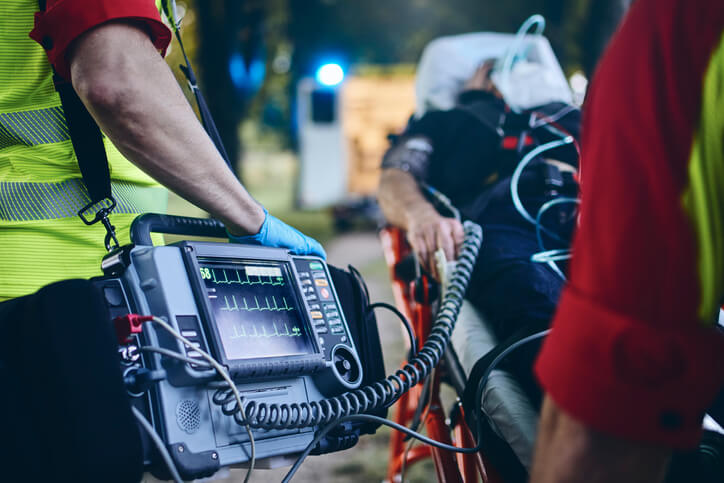
Heart Failure: Symptoms, Causes, and Types
Heart failure occurs when the heart can’t pump well enough to supply the body with blood and oxygen. According to the Center for Disease Control (CDC), approximately 6.5 million adults in the United States have heart disorders. Our ACLS accreditation sessions are approved by the American Heart Association to prepare health care professionals for cardiovascular emergencies.
How Does the Heart Work?
The heart is a fist-sized muscle that pumps blood and removes waste. The right side takes in deoxygenated blood and sends it to the lungs, and the left side receives nutrient-rich blood from the lungs and sends it to the rest of the body. When the heart gets weak and can’t supply cells with oxygen, it causes symptoms like shortness of breath, fatigue and coughing. In acute heart failure, strenuous activities like walking or climbing stairs become difficult.
What Is Heart Failure?
Heart failure is a chronic condition that gradually makes it harder for organs to get the blood and oxygen they need. To make contractions stronger, heart muscles stretch and eventually become enlarged. Blood vessels get smaller to stabilize blood pressure, and the heart beats faster. When it can’t keep up, symptoms develop and diagnosis occurs. Usually, failure affects the left side first.
- Diastolic vs Systolic Heart Failure
The left side of the heart can fail in two ways:
- Systolic heart failure occurs when the left ventricle can’t contract strongly enough to send fresh blood to the body.
- Diastolic heart failure occurs when the left ventricle can’t relax between heartbeats.
The heart can’t relax between heartbeats in diastolic vs systolic heart failure, which means it can’t take in more blood.
- Pulmonary (Right-Sided) Heart Failure
Right-sided, or ventricle, heart failure usually follows problems with the left side. After the left ventricle fails, pressure in the lungs accumulates, causing blood to back up in veins.
- Congestive Heart Failure
Congestive heart failure is any chronic progressive condition, including systolic and diastolic heart failure, that keeps the heart muscles from pumping blood. It refers to the stage of heart failure where fluid accumulates around the heart and keeps it from beating efficiently, gradually leading to acute heart failure.
- Decompensated Heart Failure
Compensated heart failure means the heart still works efficiently enough that symptoms are absent or easy to manage. Decompensated heart failure means symptoms have developed, such as:
- Congestion in lungs that makes breathing difficult
- Wheezing or coughing
- Fatigue
- Difficulty exercising or performing daily activities
- Abnormal heart rhythms
Treating Heart Failure
Medications, ranging from blood vessel dilators and diuretics to potassium and magnesium, may be prescribed to treat heart failure. Doctors might also recommend surgery, including transplant or bypass, or assistive devices like pacemakers that help the heart work more efficiently.
The American Heart Association recommends these habits to prevent heart failure or to keep heart issues from progressing:
- A healthy diet
- Exercise
- Moderate activity
- Flu and pneumonia vaccines
- Close monitoring of medications
- Emotional support
Get Certified Now
Advanced cardiovascular life support (ACLS) certification is the American Heart Association’s emergency training for diagnosing and treating cardiovascular patients. We know health care professionals are busy. That’s why we offer our condensed sessions at the time and place of your choice. Contact us today to schedule a private session or learn more about our classes.

No Comments
Sorry, the comment form is closed at this time.